|
|
OTHER HARDWOOD TREES
Basswood, Beech, Horse-chestnut
Tiliaceae, The Linden Family
Fagaceae, The Oak Family
Hippocastanaceae, The Horse-chestnut Family
 AMERICAN BASSWOOD (Tilia americana)
AMERICAN BASSWOOD (Tilia americana)
Other Names:
Basswood, American Linden
Key ID Features: Leaves, Form, Fruits, Buds
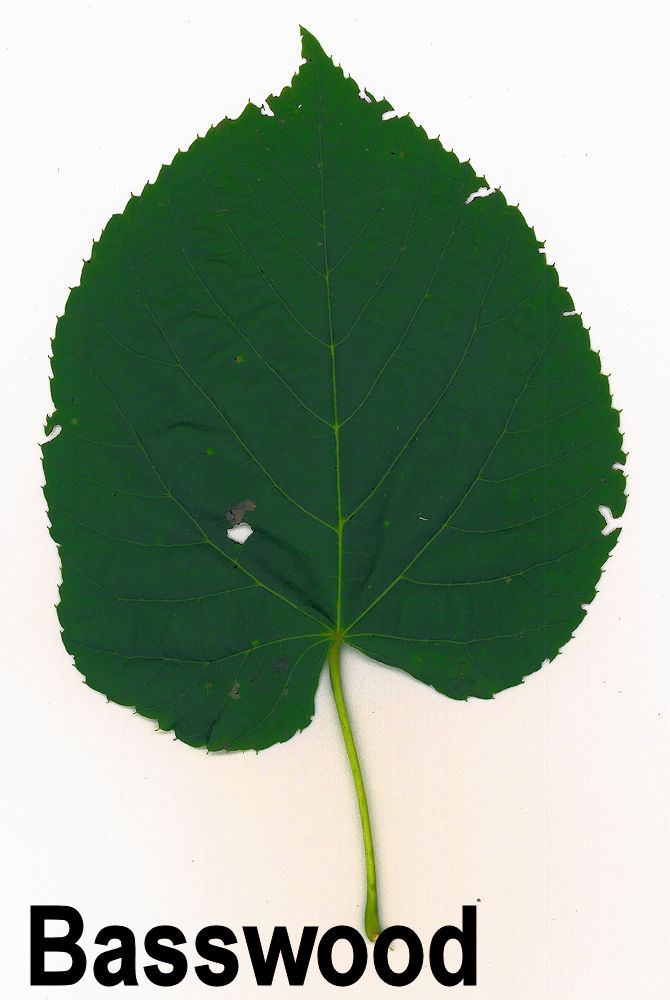
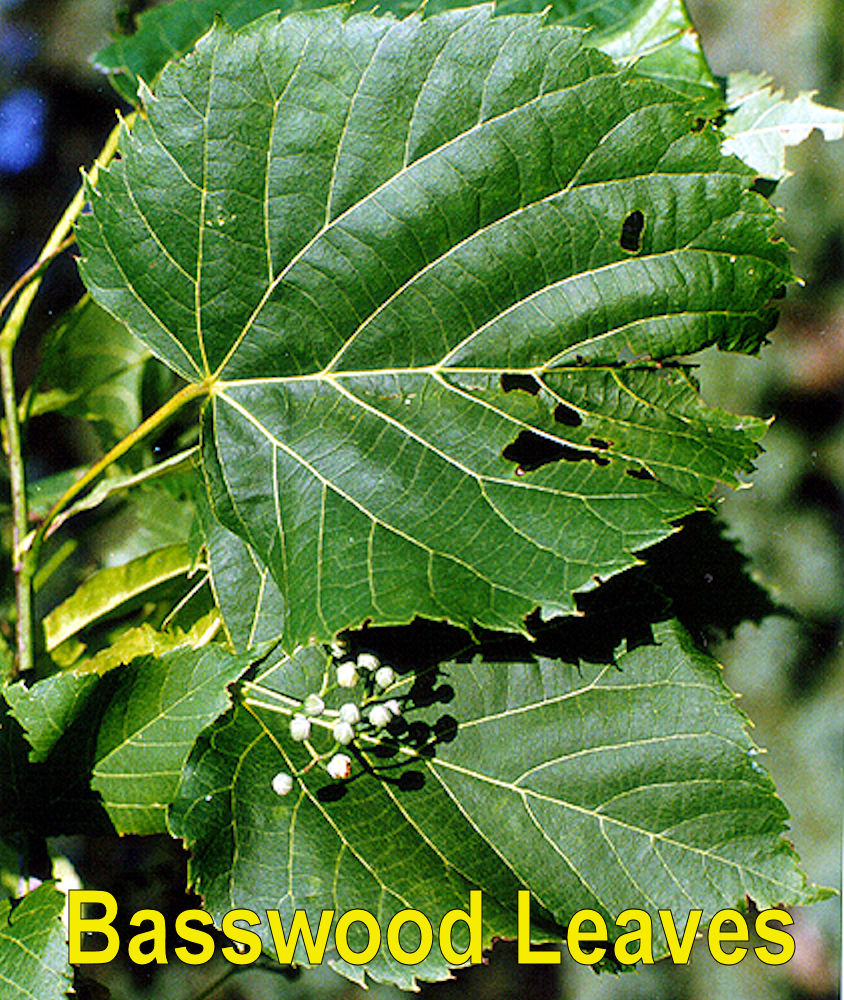
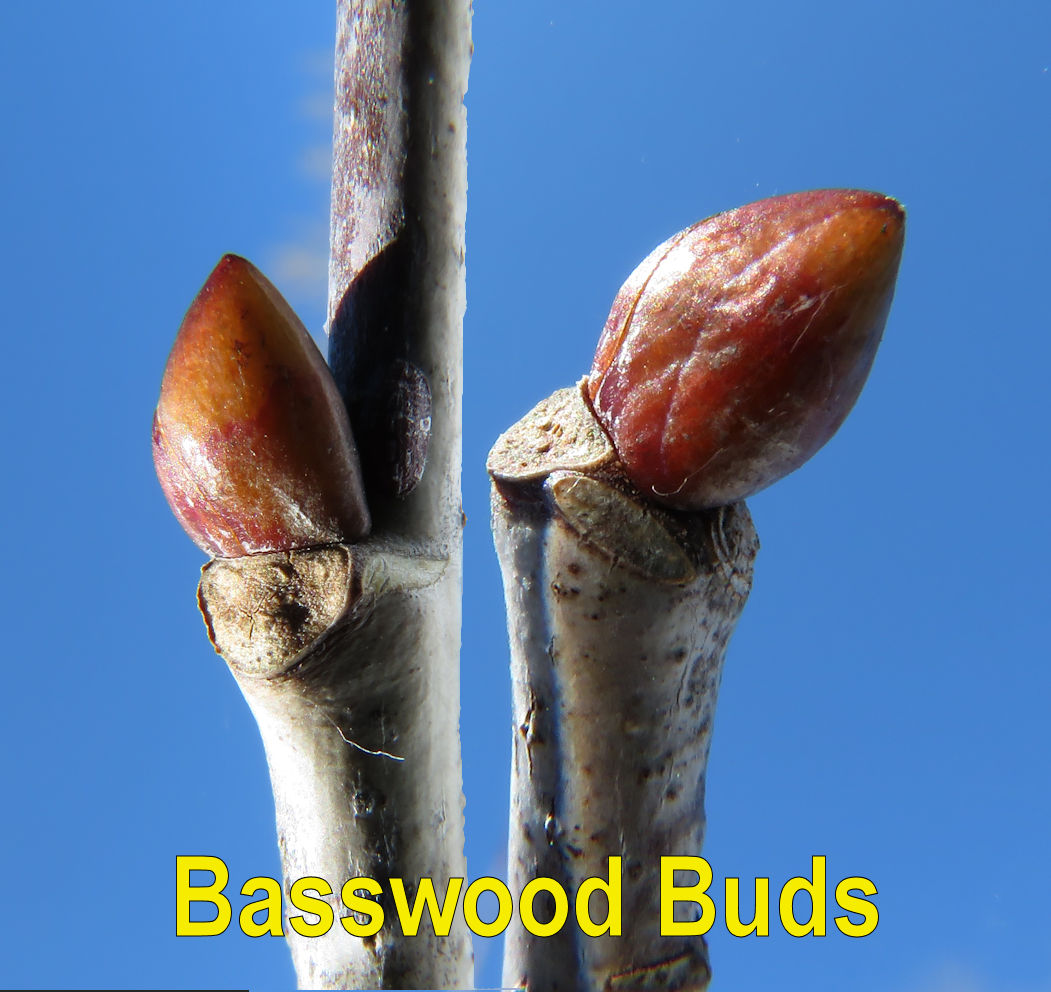
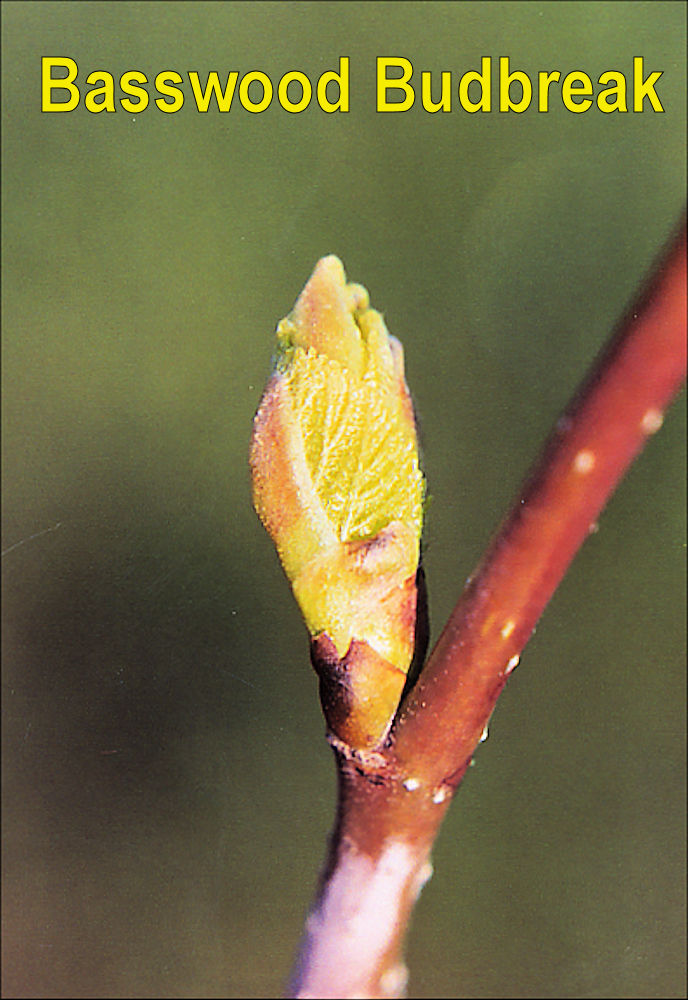
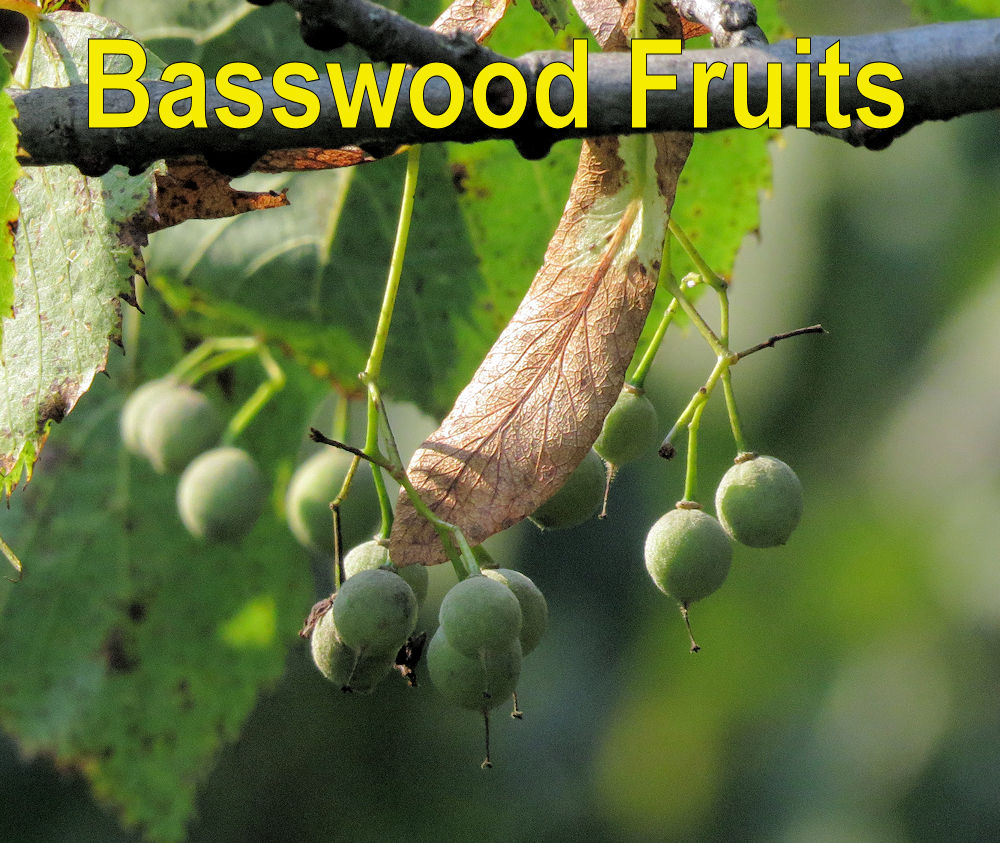

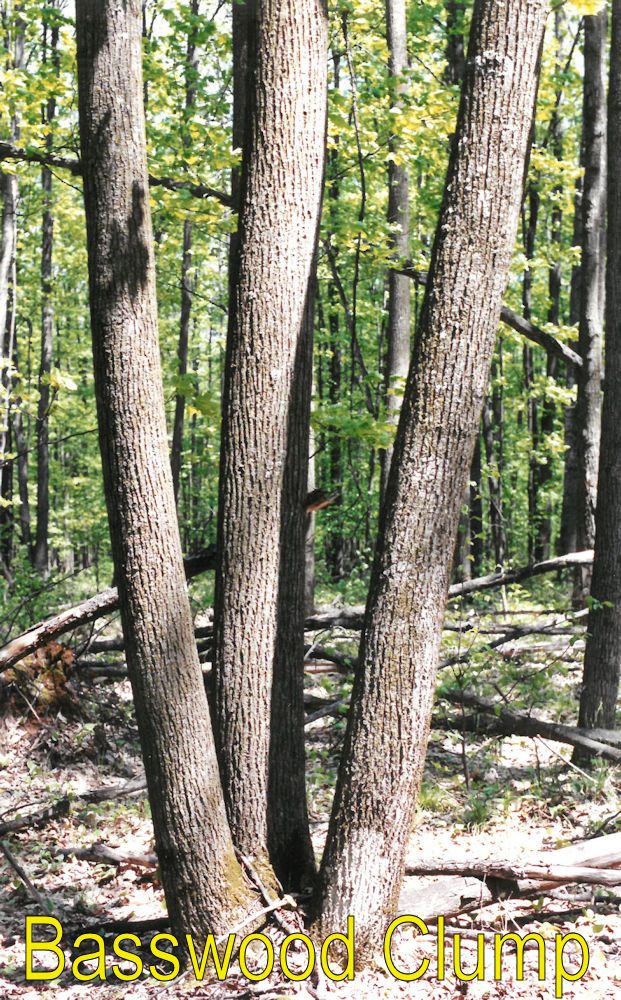
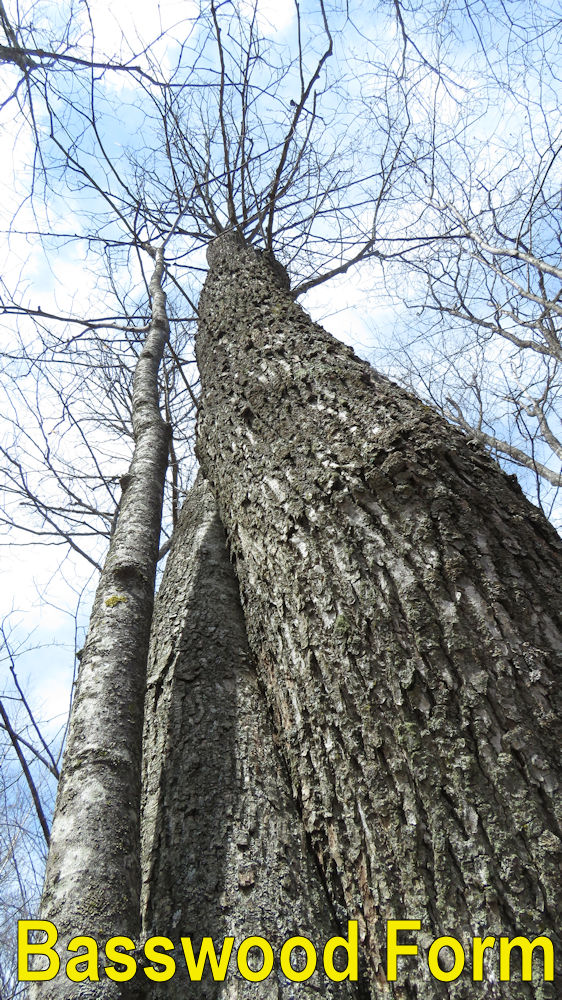
LEAVES are distinctly
heart-shaped and about as wide as they are long,3-6 inches long, coarsely-toothed with a taped tip. Terminal BUDS are roundish, shiny, and brick red.
TWIGS are dark gray or brown and smooth. FRUITS are hard, little nuts that
look like peas. There is usually a cluster of a half-dozen or so on the stalk.
The stalk starts from a special leaf that is very long and narrow. The fruit stems
and special leaf often remain on the tree well into the winter. The BARK is dark
gray and develops neat vertical ridges on older trees. TRUNKS are often tall,
well-formed, sometimes sweepy but
clear of branches until high in the tree. Basswood often grows in CLUMPS originating
from stump sprouts. The crown is small relative to other trees.
Basswood grows most commonly in the northern hardwood forest type in ASSOCIATION with sugar maple
and beech. Sometimes it will grow in floodplains along rivers. Common Pests: loopers, cankerworms, tussock moths.
 AMERICAN BEECH (Fagus grandifolia)
AMERICAN BEECH (Fagus grandifolia)
Other Names:
White Beech, Gray Beech, Red Beech, Ridge Beech
Key ID Features: Leaves, Buds, Bark, Fruit
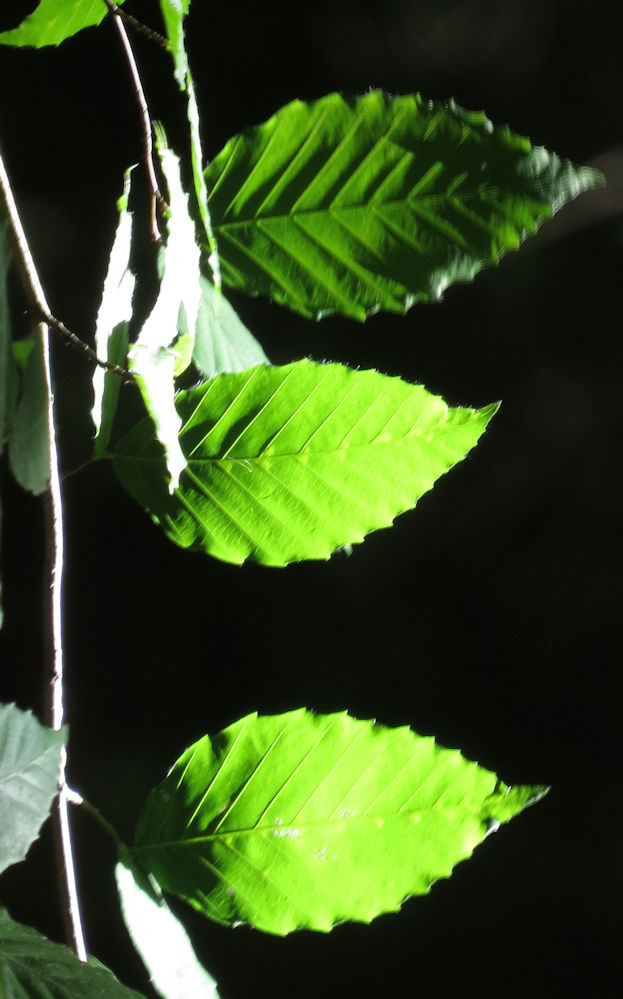
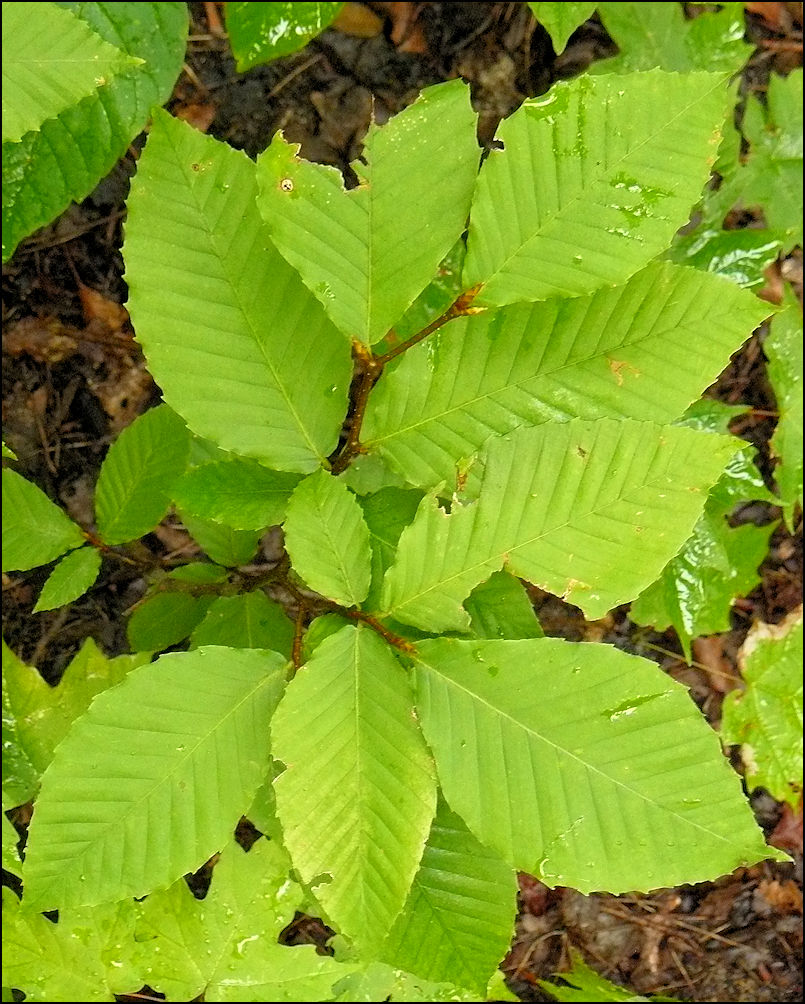
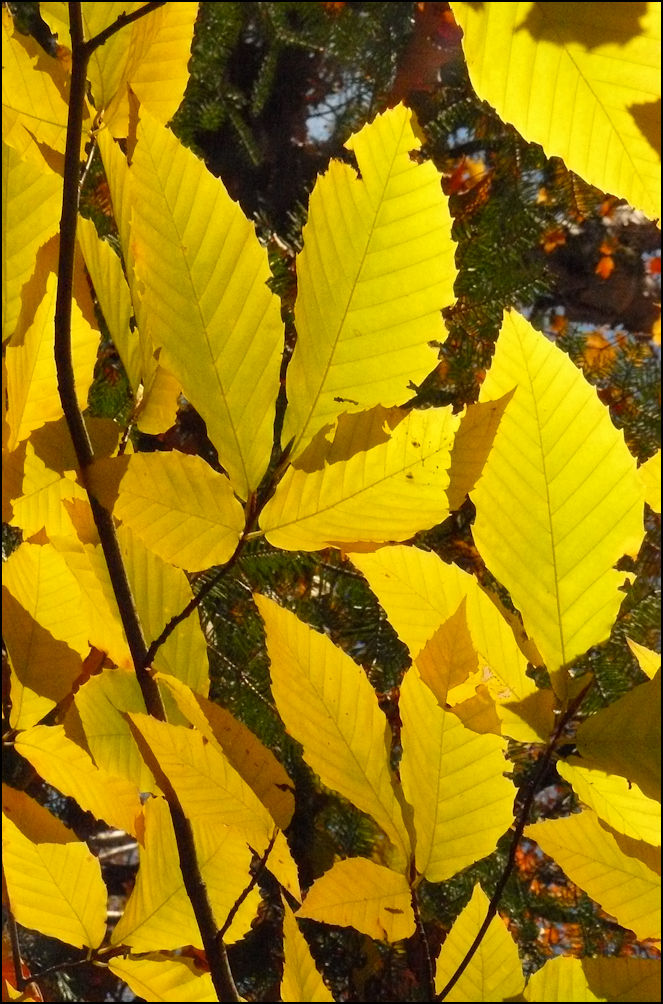
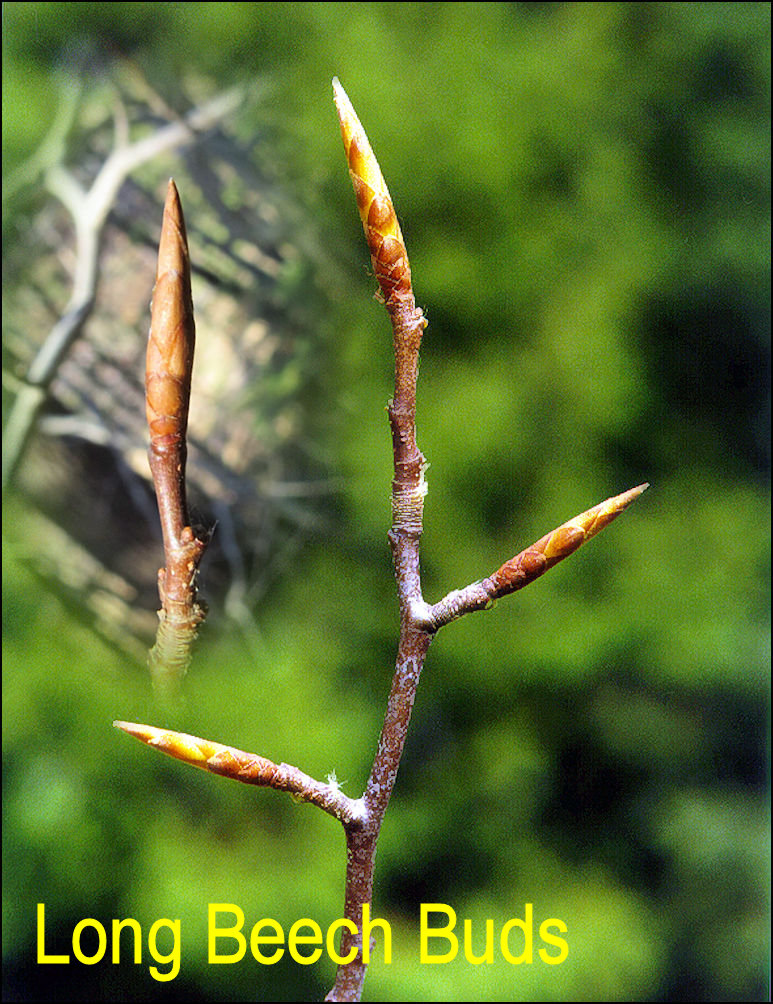
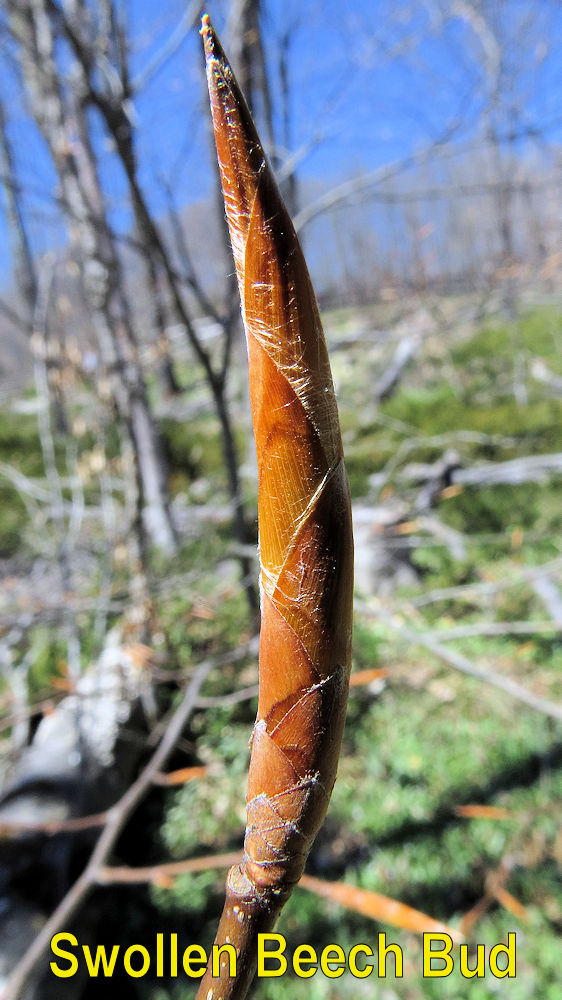
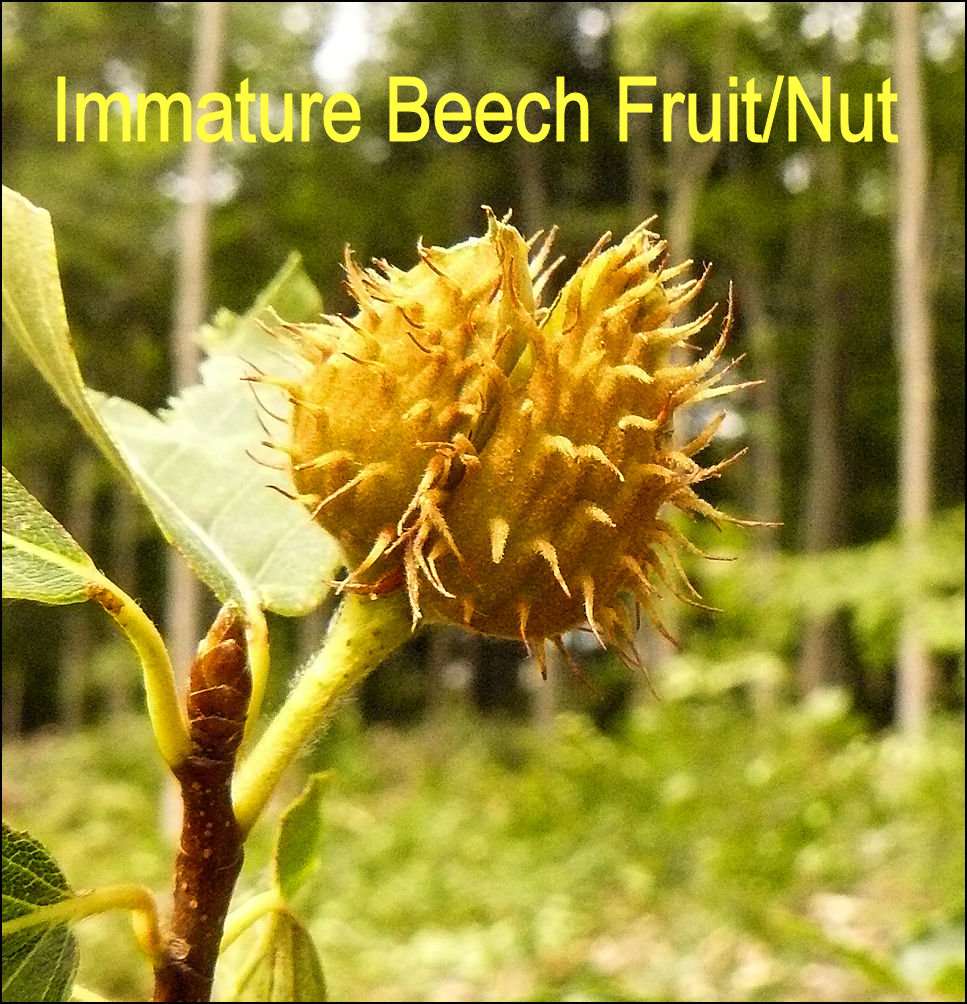
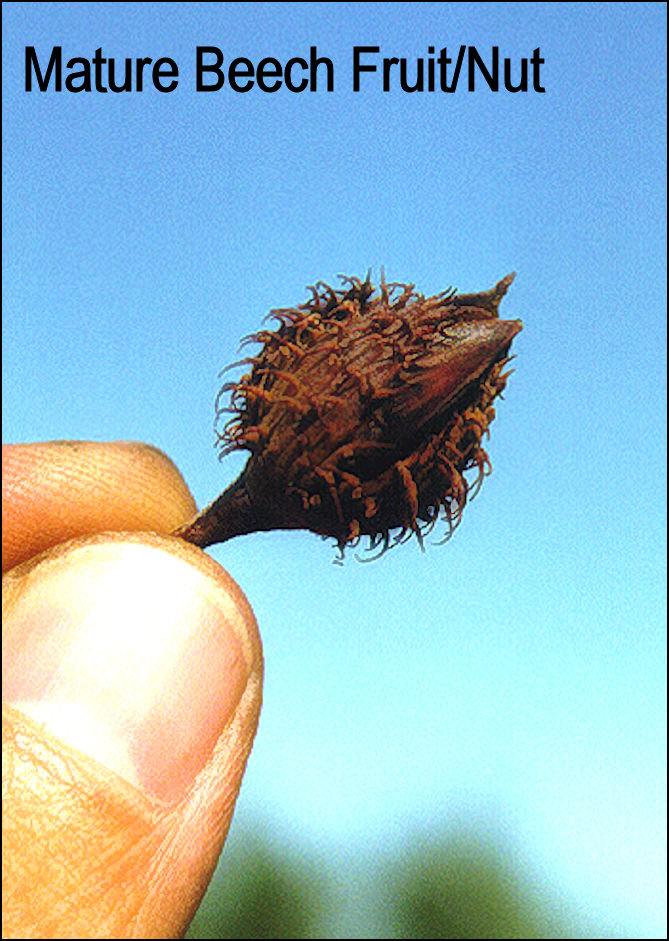
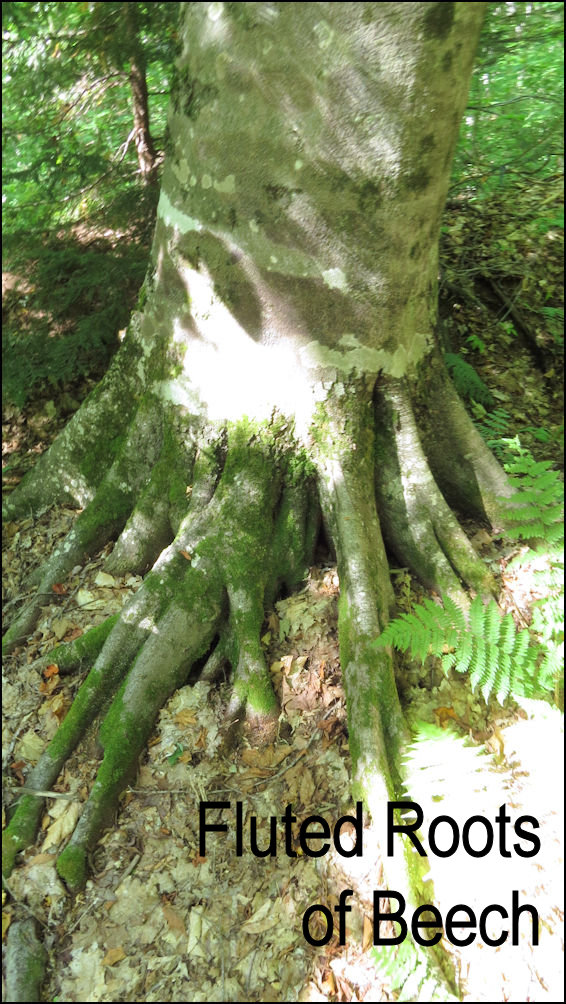
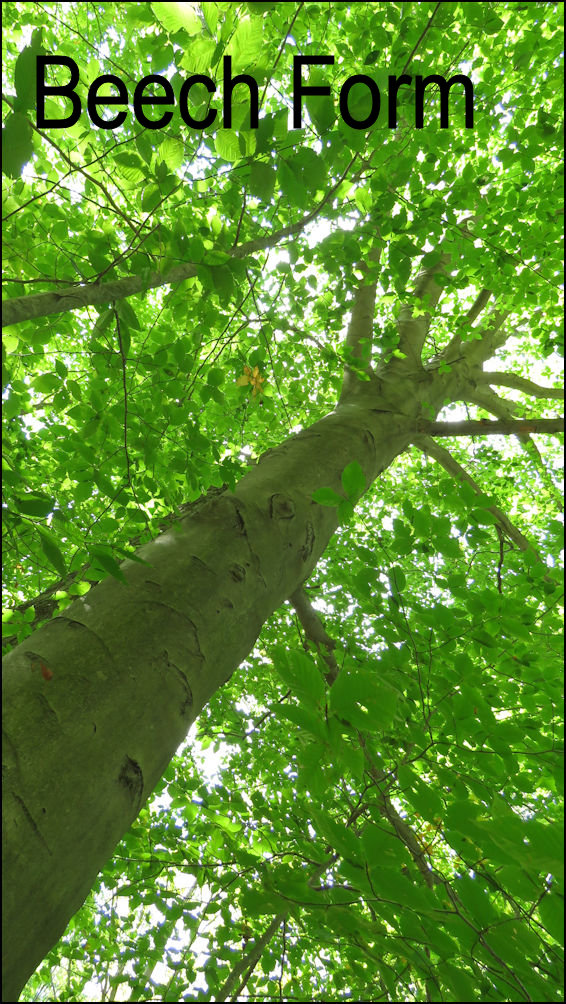
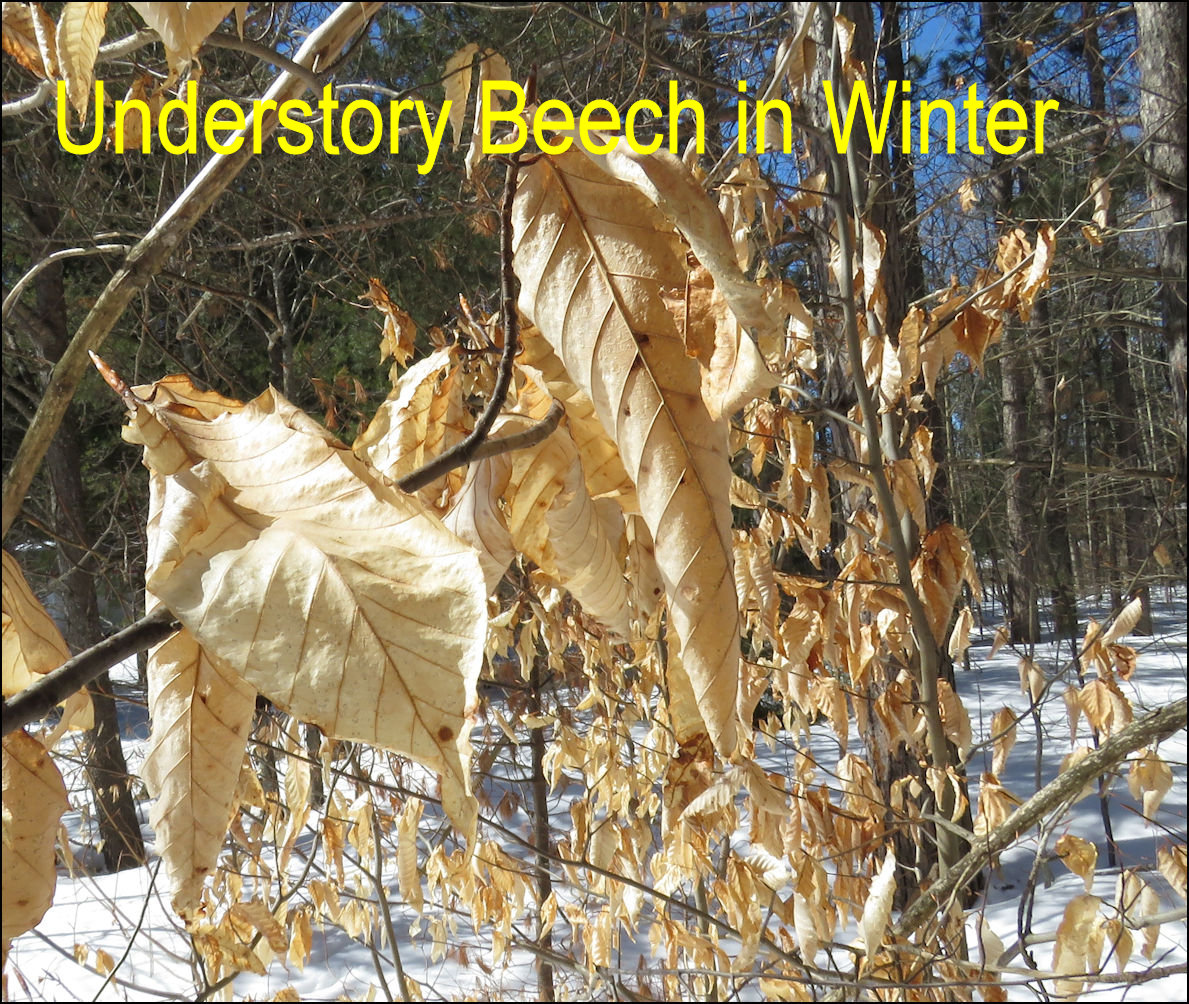
Beech LEAVES are 3-4
inches
long with many "points" or coarse
teeth along the margin.
Lateral leaf veins are
nearly parallel with each other. There are not any other U.P. trees with leaves
similar to beech. Separate male and female FLOWER clusters form in the spring.
BEECH-NUTS are about a half inch in size, housed in a spiny husk that splits into four
parts. The triangular nuts ripen in the fall and are an excellent food source for
many species of wildlife, such as deer and turkey. TWIGS are brown and
slender. The terminal BUDS of
beech are about an inch long, shaped sort of like little cigars. The BARK is smooth
and gray, even in large diameter trees. Tree SIZES can usually reach 60-80 feet in height
and 2-3 feet in diameter. Beech is a common ASSOCIATE of our northern
hardwood forest type, but only in the eastern U.P. Oddly enough, beech does not
commonly occur in the western counties. Beech is very tolerant of shade and, as a
result, is common in the understory of many forest stands. During winter months,
these understory beech often retain many of their pale brown leaves. Ironwood is
another understory species that will often retain leaves into the winter. However,
ironwood leaves are a darker brown. Common Pests: cankerworms, beech bark disease.
HORSE-CHESTNUT
(Aesculus hippocastanum)
Other Names: Buckeye
Key Features: Leaves, Nuts, Buds
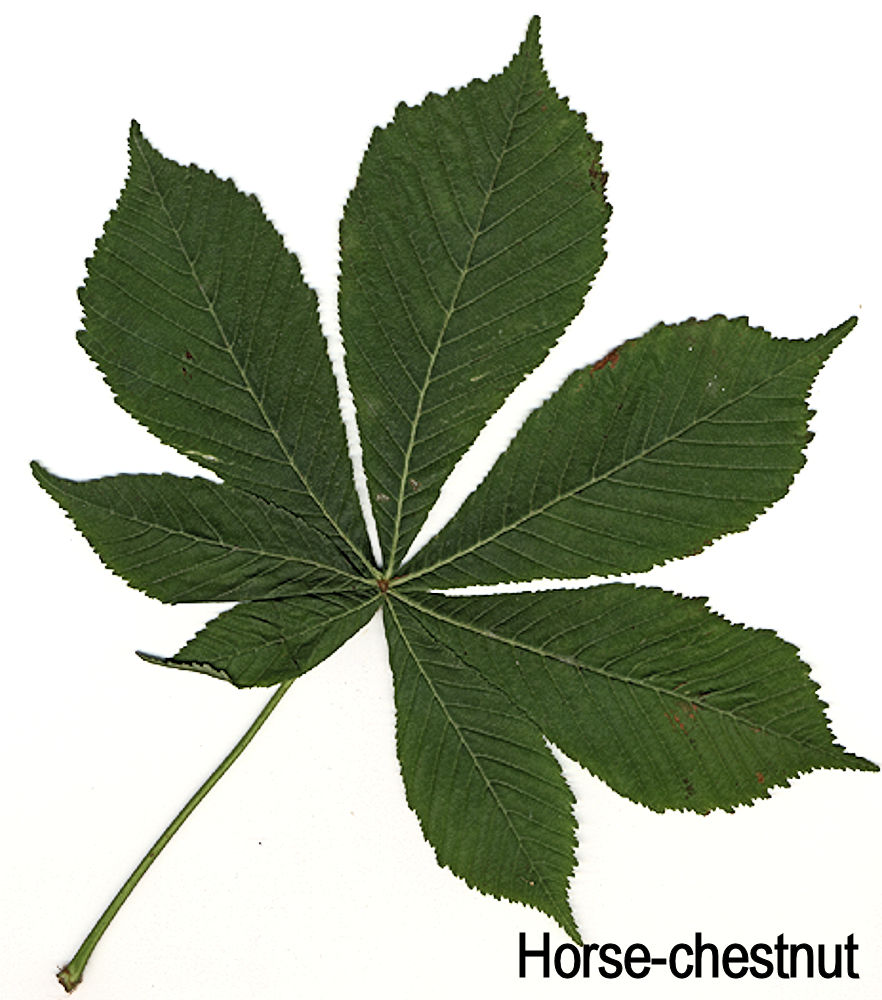
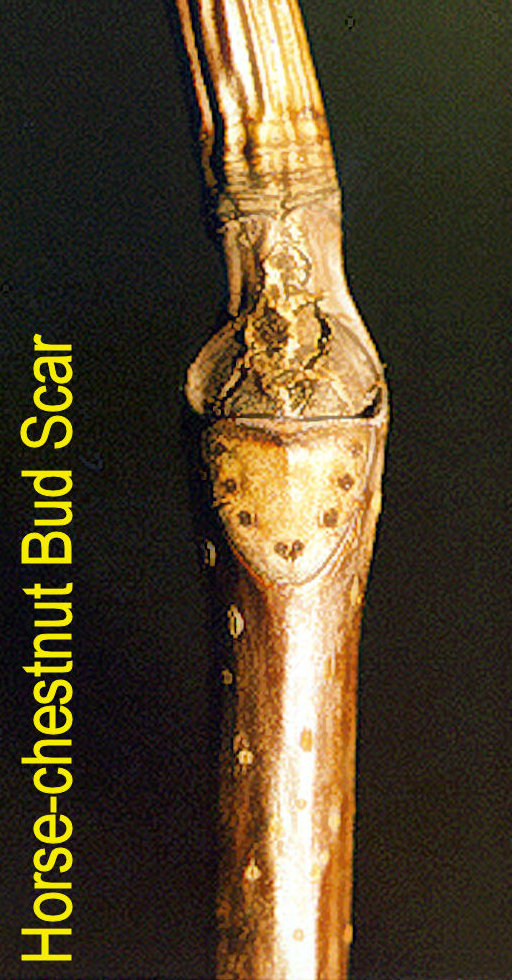
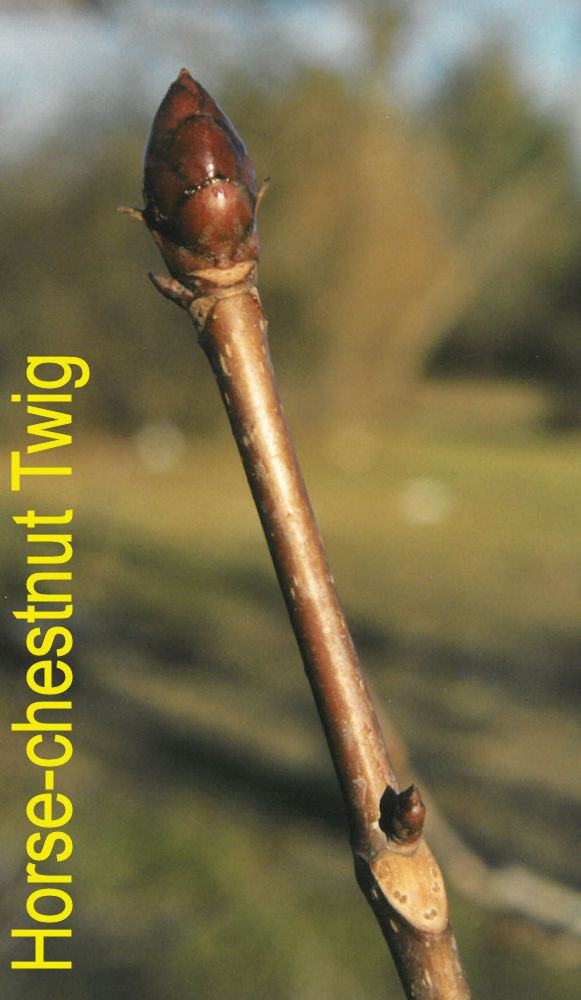
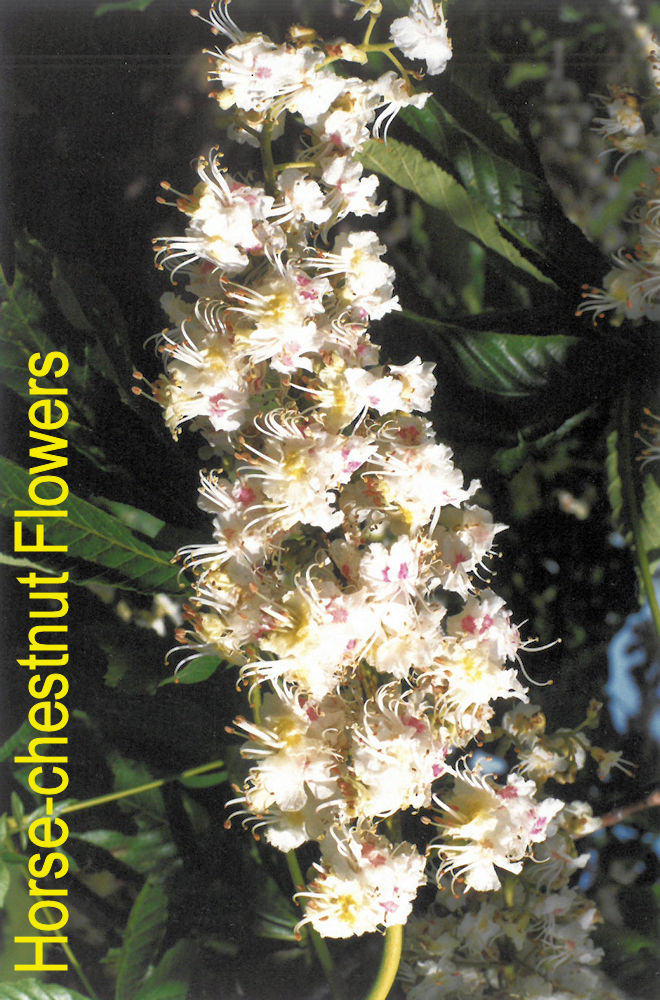
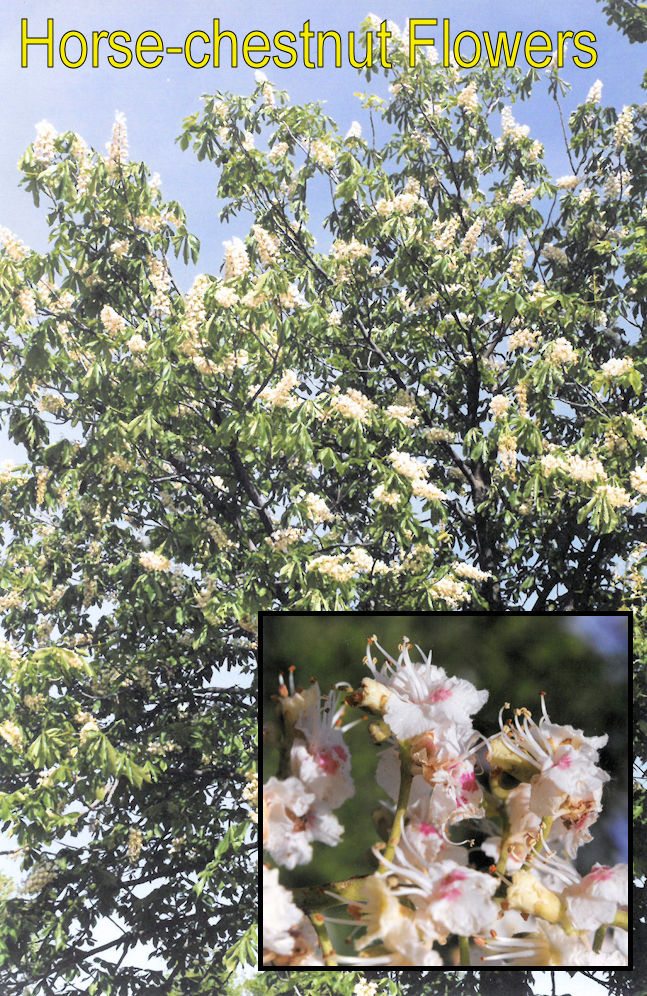
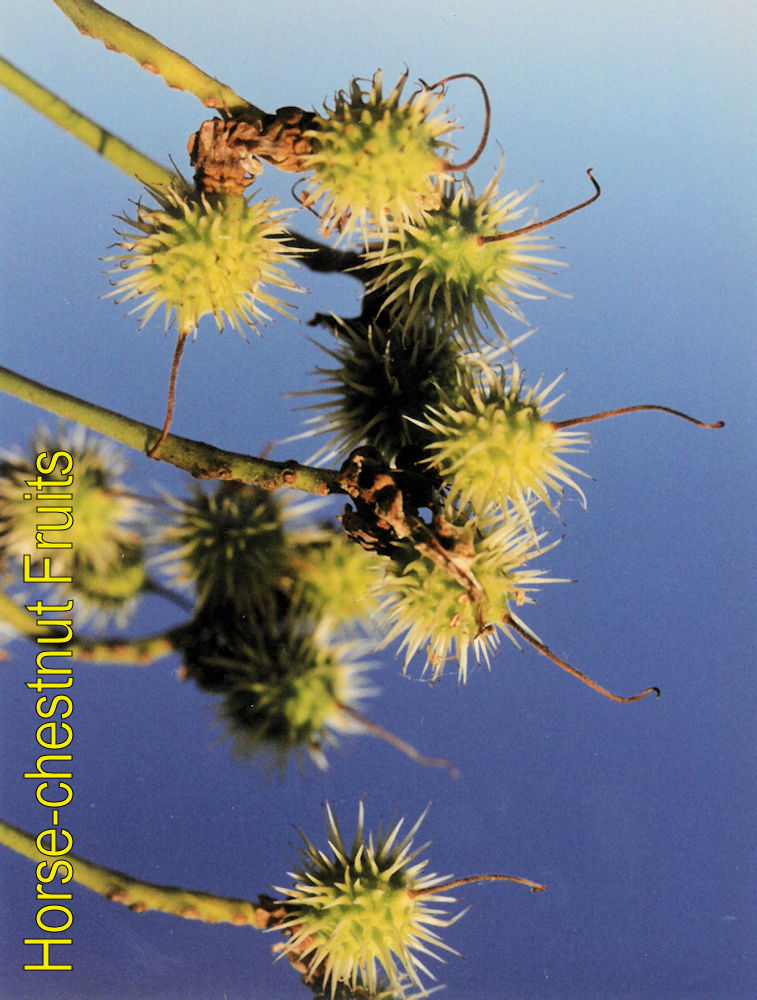

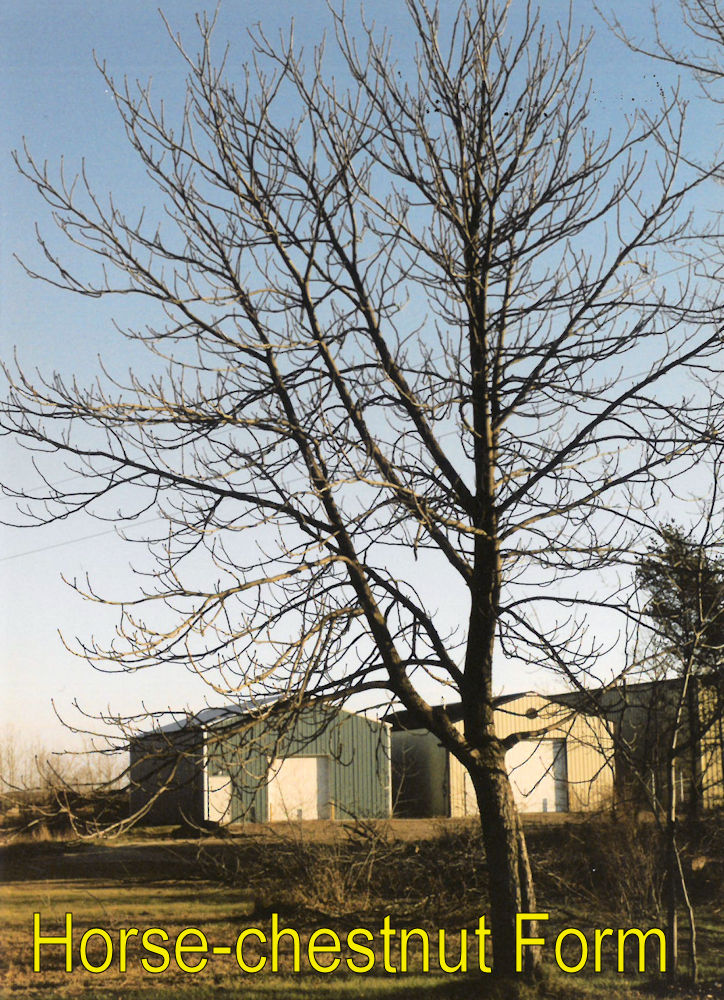
Horse-chestnut is not a forest tree in the
U.P. but it is an interesting tree that sometimes is planted in towns. The LEAVES
are palmately compound, which is unusual. The
tree has a beautiful broad spike of white FLOWERS in the spring that is very
sweet-smelling. A reddish-brown NUT forms inside a thin greenish or brown
husk. The nut has oblong patch that looks like a "buck eye", thus the
common name of the genus. The entire fruit is about an inch or so in diameter.
The terminal BUD is large,
nearly an inch long. Dark brown TWIGS are rather stout. It is sticky and a deep brick red in
color. Horse-chestnut is a native of the Balkan peninsula (southern Europe).
There are buckeyes native to the USA but they grow in the central hardwood region of the
USA. However, U.S. Forest Service data indicate the presence of Ohio buckeye (Aesculus
glabra) in Alger County
Click on the blue to return to the Deciduous Summer Key or the Deciduous Winter
Key.
Click HERE to return to the home page.
A note about the images on this website, click here.
This site created and maintained by Bill Cook, MSU Extension Forester for the Upper Peninsula of Michigan. Editing and modification is ongoing. Submit suggestions, questions, and corrections to cookwi@msu.edu or call 906-786-1575.